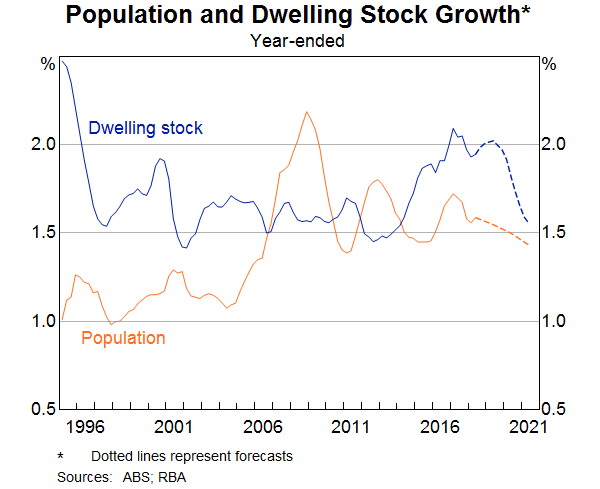The Reserve Bank of Australia Governor, Philip Lowe, yesterday addressed the AFR Business Summit with a speech that largely focused on the recent trends in the Australian housing market.
Mr Lowe noted the 9% fall in house prices since late-2017, which followed a five-year run that saw nationwide house prices increase by almost 50%. This had ripple effects on the share prices of ASX shares like Commonwealth Bank of Australia (ASX: CBA) and Westpac Banking Corp (ASX: WBC).
Speaking about the slump, Mr Lowe noted that it is not the first time we have seen house prices move this way.
“Declines of this magnitude are unusual, but they are not unprecedented,” he said.
He reflected on similar pull-backs between 2008 and 2010, as well as two occasions in the 1980s. However, there are some key differences between what we are seeing now in the housing market and what we have seen previously.
What’s The Difference?
Mr Lowe noted that this adjustment has been unusual. Typically, similar falls have been in response to rising interest rates and unemployment.
He noted that this time, however, interest rates remain largely unchanged and unemployment is at its lowest levels since the 1970s in New South Wales and is similarly low in Victoria.
Why Are Prices Falling?
Mr Lowe said that the origins of the current corrections, “largely lie in the inflexibility of the supply side of the housing market in response to large shifts in population growth.”
Population growth saw a sharp increase in the mid-2000s but the rate of new houses being built was slow to respond to the change, resulting in higher house prices. Today, we are again witnessing the building rates failing to recognise the shifts in population growth.
“Over recent times, the number of dwellings in Australia has been increasing at the fastest rate in more than two decades. Again, not surprisingly, prices have responded to this extra supply.”

The graph above shows the relationship between dwelling stock and population growth and shows forecasts up to 2021 that suggest population growth and dwelling stock should begin to converge.
Part of this reduction is caused by a decline in demand by non-residents, said Mr Lowe, citing a decreasing number of approvals by the Foreign Investment Review Board.
Another reason is the availability of credit, with RBA sources suggesting that the average maximum loan size offered to new borrowers has decreased by 20% since 2015.
Concluding the speech, Mr Lowe stated that “the adjustment in our housing market is manageable for the overall economy,” and it is unlikely to derail economic expansion, especially as it is offset by increases in wage growth that are expected over the coming years.
The RBA kept the cash rate at 1.5% at yesterday’s meeting. They did not provide any new guidance on when that rate may change.
Need Dividend Income In Your Life?
[ls_content_block id=”14945″ para=”paragraphs”]




